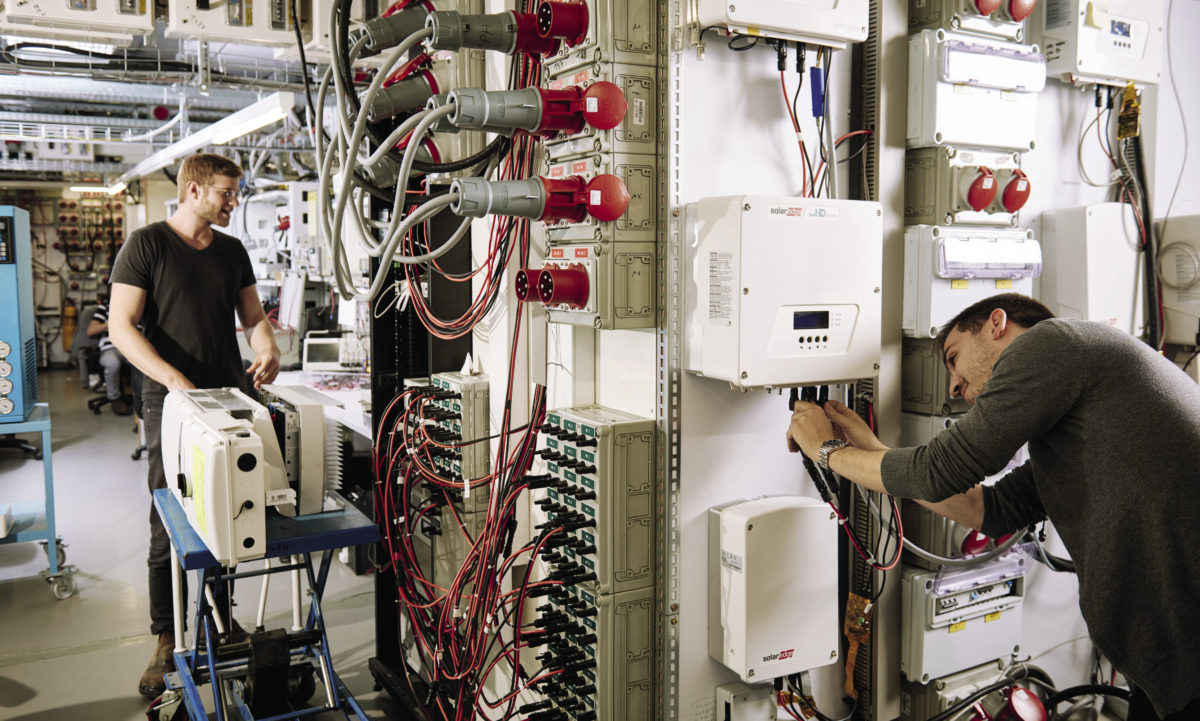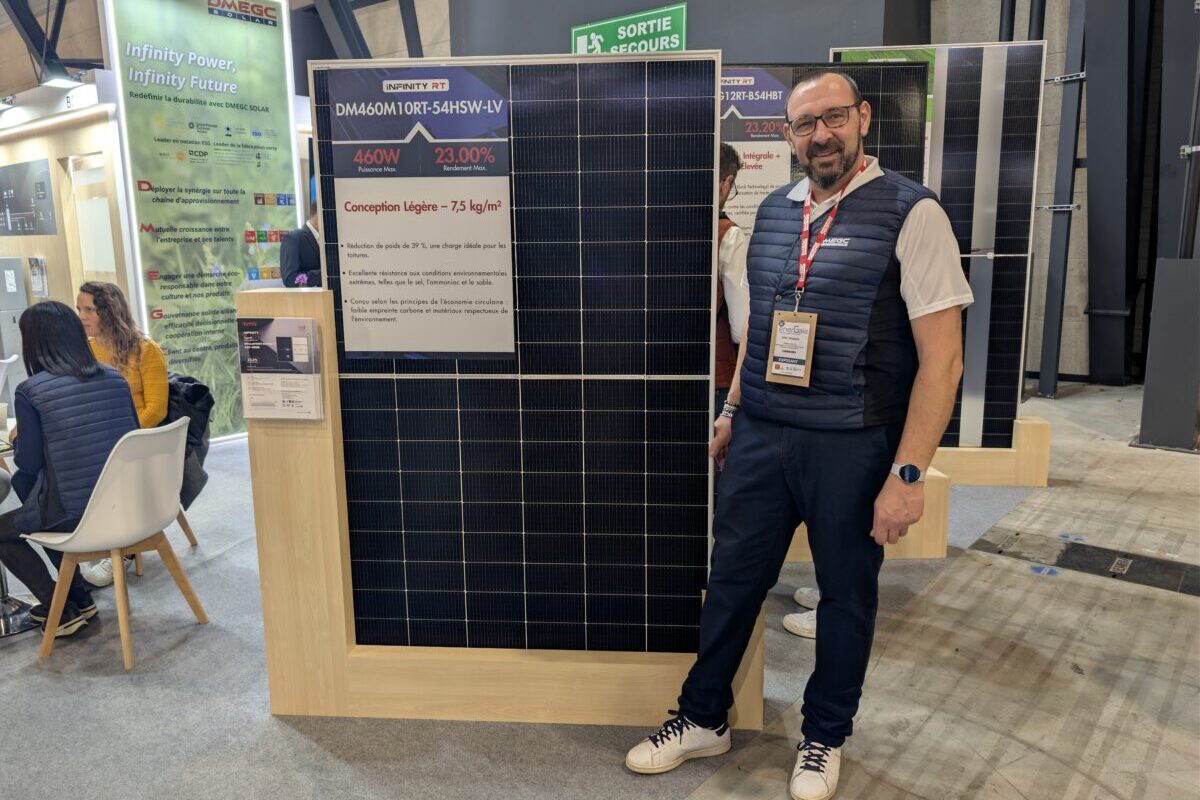From pv magazine 04/2020
To the first-time visitor, paradoxes seem to abound in Israel. It’s a devout yet socially liberal Jewish state that draws hordes of Christian tourists, and it is an importer of high-cost energy with its own recently discovered natural gas reserves. It is also a relatively early adopter of solar that spawned world-beating companies before falling into a long period of stagnation. And that’s just the beginning.
“It’s 10 degrees, and the sun is still out!” Yossi is a native-born Israeli, or Sabra, and as he receives pv magazine at Tel Aviv’s Ben Gurion Airport on a February afternoon, he’s wrapped up against a stiff breeze. “In 50 years, I’ve not seen such a winter before,” he says. Perhaps fittingly, as unseasonable warmth affected much of the world in late 2019 and the opening months of 2020, while Israel was gripped by historic rainfall and cold.
Yossi pulls out into heavy traffic and sets out on the 30-odd minute drive to SolarEdge HQ situated in Herzliya, a satellite town of Tel Aviv that is home to tech giants like Apple, Amazon and Microsoft, as well as a flashy WeWork co-working space. The SolarEdge tower can no longer house all of the company’s HQ-based team, and a visit to the site requires moving between a number of office spaces. The building does, of course, host a rooftop solar array, hooked up to some of the test and R&D power electronics projects underway in the labs inside.
History and change
SolarEdge was initially a DC power optimizer and inverter supplier to the residential segment and has since expanded its portfolio. Founded in 2006 by five Israeli military colleagues, it rapidly grew in the U.S. solar leasing segment and eventually listed shares on the Nasdaq in 2015. Now, SolarEdge enjoys prominent status among its inverter rivals in markets such as the United States, Europe, Australia, and Japan, with offices in 16 countries. In its latest, pre-Covid-19 guidance, the company said that it was heading for annual revenues approaching $1.5 billion in the current financial year.
In 2020, the company is still in the process of absorbing the impact of a significant blow to its leadership, following the untimely death of its founding CEO and Chairman Guy Sella in August 2019. Sella was viewed by many in the solar industry as a visionary leader.
“Personally, it’s been a very hard ordeal,” says Lior Handelsman, VP of marketing and product strategy, and one of the company’s founders. Moving boxes remain unpacked against one wall. “I worked with Guy for something like 20 years. It is literally like losing an older brother.”
Handelsman says that the SolarEdge management team has had to make adjustments, noting that some leadership responsibilities have changed since Sella’s passing. But that their long track record of working together means that they remain well aligned. “Zvi [Lando] who assumed the role of CEO [appointed permanent CEO in Feb. 2020] has been with us since 2000 and is someone with whom we work well together. We are still moving forward in the same way and with the same vision.”
In late 2019, SolarEdge announced plans to construct the Sella 1 manufacturing facility in Israel. Lando noted in the company’s Q1 earnings call that it was “pushing on all cylinders” to complete construction, fit out and begin operations – particularly given the production impacts in China as a result of the Covid-19 outbreak.
The factory is being built on a “copy smart” principle, where automation and other innovations in production can be developed, trialed and scaled and then transferred to its OEM production sites in China, Hungary and Vietnam. SolarEdge has had a long relationship, dating back to 2009, with OEM manufacturer Flextronics.
“This was a ‘pet project’ for Guy Sella,” says Handelsman. “Operationally it is different, because this plant is a SolarEdge owned plant versus a contract production plant. We will not only own the machinery and testing equipment, but it will also be operated by our employees.”
The move marks a diversification from the company’s tested OEM production strategy. Handelsman says that the company “has not made the decision” to move manufacturing in-house. “We have a lot of experience in meeting growing demand. So, by using contract manufacturers, it is possible to scale up and down faster when needed.”
Growth at home
The timing of Sella 1 may prove prescient in giving SolarEdge the ability to more-easily supply its neighborhood markets, with the rooftop segment picking up in Israel and the region. In Israel, long-awaited electricity market liberalization and a shift in government thinking has seen the long-stalled solar market restart.
“Today, Israel’s treasury acknowledges that solar PV is cheaper than fossil fuel and it clears the way to move forward with solar,” says Eitan Parnass, founder and CEO of the Green Energy Association of Israel. “But for many years it was the opposite way around.”
In March 2018, Israel launched a FIT program, which combined with a program of six reverse auctions for large-scale projects, could see some 700 MW installed this year, according to Parnass.
While residential rooftop applications, particularly in built-up areas such as Tel Aviv, must compete with near-ubiquitous solar thermal systems and are hampered by a lack of regulations enabling solar for apartment dwellers, the commercial rooftop segment is “boiling hot” right now, says Parnass. The 15 kW-200 kW range is particularly attractive, he adds. The progress with solar has been made as the government strives to reach its renewable energy target of 10% by 2020 goal – which Parnass estimates should see 1.5 GW of solar added to the current cumulative total of 2 GW, including two solar thermal plants worth some 250 MW of capacity.
There are indications that the previous target of 17% renewables share by 2030 will be almost doubled to 30%. However, this longer-term target is not yet concrete, given ongoing political turmoil, with elections failing to produce majority government or a stable coalition. In the political vacuum bureaucrats reign, making the pro-solar stance of its finance officials all-the-more important – yet another paradox.
That’s not to say there is unanimous support for an accelerated adoption of renewables in Israel. The recently discovered Leviathan gas field in the Mediterranean Sea could supply the country, and neighbors such as Jordan and Israel with low-cost fuel, and it is already driving coal out of the country’s energy mix – down from 33% in 2017, as reported by the OECD.
Former senior Israeli environmental policymaker and diplomat Valerie Brachya is not yet convinced of renewable energy’s role in the country. “I believe that Israel’s contribution to global biodiversity is at least if not more important,” says Brachya. “Personally, I am skeptical about the significance of renewables in countries without hydro or geothermal. The issue of storage is currently unresolved.”
Approach to reliability
On the road
Electric vehicles are seen as a key technology in the energy transition, and a part of SolarEdge’s growing portfolio is its EV charger – which allows for faster charging from the grid, and maximizes rooftop PV feed-in. The company is also expanding the manufacturing facilities of its 2018 acquisition, Korean lithium-ion battery manufacturer Kokam. Along with that comes its uninterruptible power supply (UPS) product and virtual power plant (VPP) activities which, while not significant in terms of revenue, provides SolarEdge with the technical capabilities to deal with the “issue of storage” that concerns Brachya and others.
“There are pretty much four high-level tracks that we are focusing on,” says Handelsman, setting out the company’s 2020 priorities. “The whole world of the new energy ecosystem – maximizing self-consumption, and integration of EV, PV, storage, and home automation.” But to this future-focused lists he adds more pressing market priorities such as new products for the utility scale, and generations of products with improved functionality in terms of safety and monitoring. “And cost reduction,” he adds, “which can only really be achieved with innovation.”
The author recently traveled to Israel as a guest of SolarEdge
This content is protected by copyright and may not be reused. If you want to cooperate with us and would like to reuse some of our content, please contact: editors@pv-magazine.com.




The Blakers-Stocks global atlas of potential pumped hydro storage sites lists a fair number in Israel and the occupied territories, and there are dozens more in mountainous neighbour Lebanon. The issue for many of them is water. However, closed-cycle PUHS only loses modest volumes through evaporation, which can be reduced by colocating floating solar panels. At a pinch, you can use unlimited seawater, as was done in Okinawa.